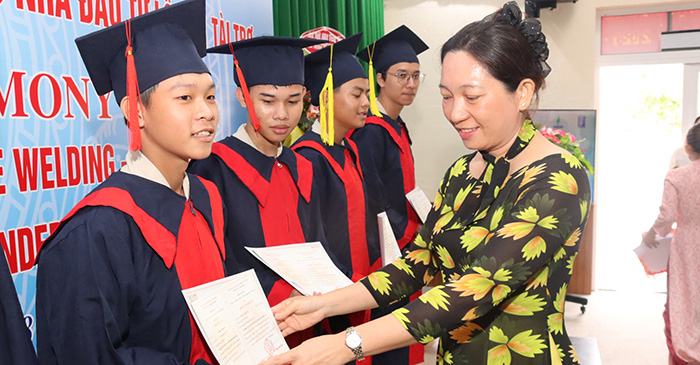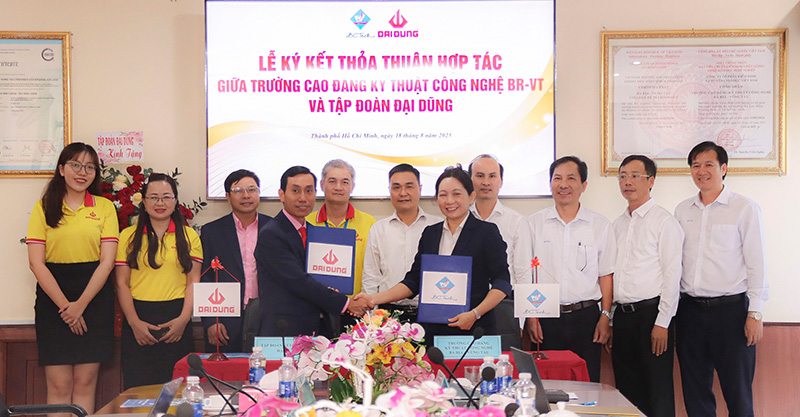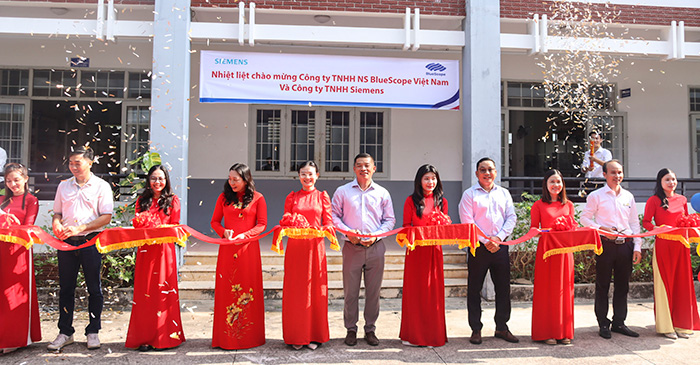Breakthrough in vocational training and job creation – Part 1: Improving the quality of human resources
Date Submitted: 14/12/2021
Investing in facilities and equipment for public vocational education institutions, flexibly deploying appropriate training models… BR-VT has gradually improved the quality of human resources, especially qualified human resources. skills in the area. Over the past 30 years, vocational training has achieved many impressive achievements.
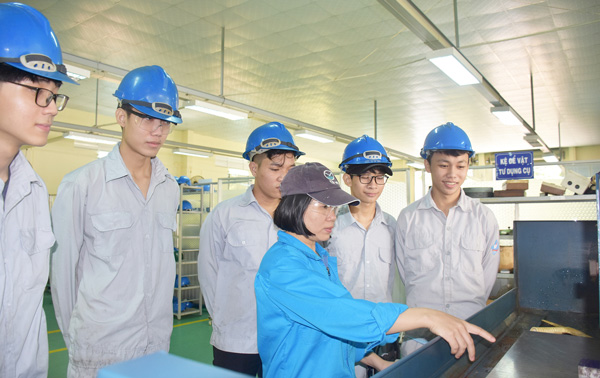
BR-VT prioritizes resources to promote vocational training and improve the quality of human resources in the area. In the photo: Students of BR-VT College of Engineering and Technology practice at the workshop
Human resource development
Since 1991-2020, BR-VT has spent nearly VND 699.8 billion to invest in facilities and equipment for public vocational education institutions from the local budget. The investment in resources has helped vocational education institutions improve training quality, affirming their names in the vocational school system across the country. Typically, the province’s investment in BR-VT College of Technology to become a prestigious and high-quality vocational education institution in nearly 1,000 colleges and universities across the country. The school is ranked by the Ministry of Labour, Invalids and Social Affairs as a key vocational education institution with one profession meeting national standards, three occupations meeting ASEAN standards and two occupations meeting international standards.
Mr. Huynh Viet Trieu, Head of the Department of Vocational Education Management, Department of Labour, Invalids and Social Affairs, said that along with the head of infrastructure, the province also invests in vocational training through the national target program, programs, cooperation projects with foreign countries such as Germany, Korea, Australia, Japan… and other mobilized socialization resources. The training models “9+”, “dual training”… are deployed flexibly and effectively. In particular, BR-VT is one of the provinces that attract enterprises to participate in the largest vocational training process in the country. More importantly, the perception of families and learners has changed markedly when choosing vocational training.
For example, the case of student Tran Thien Tan, BR-VT College of Technology. Tan said that when he chose to study, he hoped to find a job soon after graduation. Smart, agile, Thien Tan is one of the excellent students of BR-VT College of Engineering and Technology. She has won many high awards, including the Bronze Medal for CNC Milling at the 11th National Vocational Skills Competition in 2020. Thien Tan shared: “With my circumstances, I see vocational training as an option. most appropriate and transparent. The process of studying with me is very convenient, being close to home, and saving a lot of study costs. More importantly, I think job opportunities come to me more easily after learning a job.”
Throughout the process of implementing vocational training, BR-VT has flexibly changed its methods to apply a suitable model, bringing efficiency in human resource training. The model of “dual training” is one of the successes that the province has implemented effectively, not only attracting learners but also attracting many businesses to participate. With the model’s effectiveness, many vocational education institutions in the province have maintained close relationships with enterprises in recent years to implement “dual training” for their students and students.
Also according to Mr. Huynh Viet Trieu, the process of schools and enterprises in parallel vocational training has contributed to providing the market with a suitable labor force in terms of quantity, quality and structure of industries and occupations… In this direction, BR-VT has effectively implemented the “dual training” model. As a result, it has solved the problem of supplying local human resources to meet the production needs of enterprises. On the other hand, this direction contributes effectively to creating jobs for local workers,” Mr. Trieu emphasized.
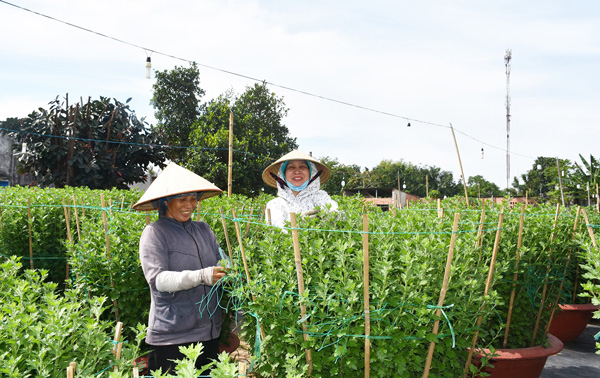
Thanks to the attention and support of the province, tens of thousands of workers have been trained and have jobs. In the photo: People in Kim Dinh ward, Ba Ria city take care of the Tet flower crop
Sticking to market demand
Mr. Tran Quoc Khanh, Deputy Director of the Department of Labour, Invalids and Social Affairs, said that, identifying the importance of vocational training, BR-VT has developed a relatively synchronous and unified mechanism and policy to facilitate educational activities. professional education development. Accordingly, BR-VT forms a vocational education system including: regular and regular with 3 levels of training to adapt to the requirements of the labor market as well as the requirements of the socio-economic development process. provincial association. Currently, the system of schools has initially moved from “supply” to “demand”, associated with enterprises, better meeting the vocational training needs of workers and improving the provincial competitiveness in terms of quality of human resources. force.
The vocational training process always follows the sustainable growth target of the province with the economic “pillars” including: industry, seaports, port logistics, tourism and high-quality agriculture. These are the areas that attract huge investment capital of enterprises in BR-VT and are the industries that need a lot of labor. In order to provide human resources, especially high-quality human resources for key fields, BR-VT’s vocational training has closely followed key industries and occupations that require a lot of labor in the province to implement. Over the years, the province has focused on training a high-quality, skilled, professional workforce, using foreign languages fluently… to meet the needs of enterprises.
Currently, BR-VT has 80% of trained employees. In particular, BR-VT also achieved many high results in many national and international exams and skill competitions… To improve the quality of vocational training, the province has invested tens of billions of dong in facilities. quality, staff, and vocational teachers. Some schools have implemented key vocational training according to international standards.
By 2020, the scale of vocational training will be increasingly expanded, the whole province has 5 colleges, 6 intermediate schools, 36 centers and other establishments at enterprises and other educational institutions, contributing to increasing the percentage of vocational training students. trained workers with diplomas and certificates from 13.4% in 1998 to 50% in 2020.
The “transformation” step of the vocational education system in recent years has made an important contribution to increasing the percentage of trained workers and improving the quality of human resources. According to a report of the Department of Labour, Invalids and Social Affairs, every year, 47 vocational training institutions in the province recruit and train more than 30,000 people at college, intermediate, elementary and vocational training levels of less than 3 months, contributing to important in improving the quality of human resources. Particularly in 2020, vocational training institutions in the province have recruited 27,935 new people. In particular, the province has focused on implementing the project “Training and developing human resources in supporting industries”. Since the implementation of the project, the Provincial People’s Committee has ordered BR-VT College of Technology to train nearly 1,000 workers with occupations: metal cutting, mechatronics and mold making. Particularly in 2020, the Provincial People’s Committee has ordered a vocational training school to create college-level molds for 236 students. Most of the graduates have jobs in Japanese enterprises.
Source: Ba Ria – Vung Tau Newspaper





